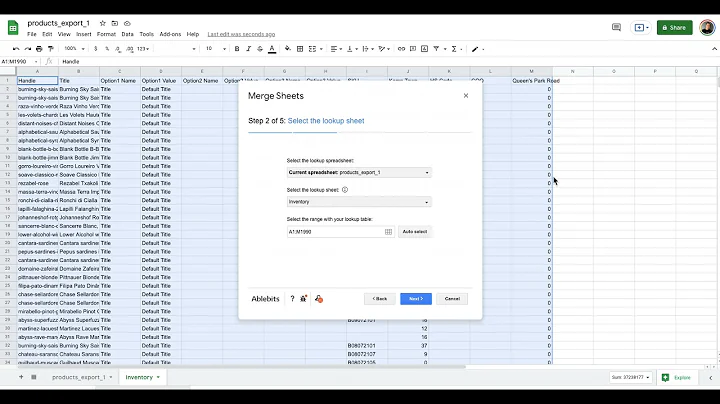Discover the Secrets to Creating a Successful Product
Table of Contents
- Introduction
- The Importance of Differentiation
- The Story of Calming Blankets
- How to Determine if Your Product is Unique
- The Significance of Good Unit Economics
- Understanding Profit Margin in E-commerce
- Researching and Calculating Unit Economics
- The Need for Replenishable Products
- Examples of Reinvigorating the Audience
- Assessing the Achievability of Your Product Idea
- Understanding Your Skills and Capabilities
- Considerations for Research and Development
- The Role of the Total Addressable Market
- How TAM Impacts Business Growth
- Using a Table to Evaluate Business Ideas
- Testing and Validating Your Product Idea
- Investing in Marketing Funnels
- Don't Get Discouraged, Keep Trying
The Factors That Make a Successful Product
In the world of business, creating a successful product requires careful consideration of various factors. From differentiation to unit economics and market potential, each element plays a crucial role in determining whether a product will thrive or fail. In this article, we will explore the five key factors that contribute to the success of a product, providing insights and advice for aspiring entrepreneurs.
1. The Importance of Differentiation
One of the fundamental factors that can make or break a product is its ability to stand out from the competition. Being differentiated is essential to attract and retain customers. Without a unique selling proposition or features that set your product apart, you risk getting lost in a sea of similar offerings. The story of Calming Blankets serves as a powerful illustration of the consequences of lacking differentiation. Despite being an excellent product, the entry of a competitor with a lower-priced version eventually led to a decline in market share. To avoid such pitfalls, entrepreneurs must find ways to make their products truly unique and valued by their target audience.
2. The Story of Calming Blankets
Calming Blankets, a product designed to improve sleep, experienced initial success in the market. However, when a major retailer launched a similar product at a lower price, Calming Blankets' customer base shifted, leading to a decline in market position. This could have been prevented if the company had focused on creating a protectable mode around their product category. By introducing innovative features or software that measured sleep, they could have secured a competitive advantage and maintained customer loyalty. This story highlights the importance of adapting and differentiating your product in a rapidly changing market.
3. How to Determine if Your Product is Unique
Determining the uniqueness of your product is a crucial step in the development process. To assess whether your product stands out among competitors, you can utilize various tools and platforms. Google Trends allows you to explore the popularity of a product category in different regions, while Ads by Tools can provide insights into competitors' advertising strategies. Social media platforms like TikTok and Facebook Ads Library can also be valuable sources of information. Additionally, the upcoming launch of a software tool aims to simplify the process of evaluating product uniqueness and competitive landscapes, providing entrepreneurs with a comprehensive and user-friendly solution.
4. The Significance of Good Unit Economics
Another critical factor in building a successful product is understanding and optimizing your unit economics. In the world of e-commerce, where advertising costs are rising, having a healthy profit margin is essential to sustain growth and acquire customers effectively. By calculating your profit margin as the difference between the sale price, cost of goods, shipping, taxes, and customer acquisition costs, you can assess whether your business model is financially viable. Many entrepreneurs overlook this aspect and launch products with insufficient profit margins, hindering their ability to scale and compete effectively. Therefore, it is crucial to conduct thorough research, including supplier costs and fulfillment expenses, to gauge your product's financial feasibility.
5. Understanding Profit Margin in E-commerce
Profit margin is a key metric to consider when launching an e-commerce product successfully. It determines the amount of profit you will make on each sale and impacts your ability to reinvest in marketing, product development, and business growth. A high profit margin allows you to sustainably invest in customer acquisition and expand your market reach. On the other hand, a low profit margin can hinder your ability to scale and compete effectively. Therefore, it is essential to carefully calculate and optimize your profit margin to ensure long-term profitability.
6. Researching and Calculating Unit Economics
To accurately evaluate your unit economics, comprehensive research and calculations are necessary. This process involves gathering data on supplier costs, freight expenses, and order fulfillment charges. It is also crucial to consider any legal requirements or patent considerations that may affect the cost of bringing your product to market. By conducting thorough research and accounting for all relevant expenses, you can calculate your unit economics and determine if your product is financially viable. Various tools and resources, such as Trend Rocket, can assist entrepreneurs in streamlining this research process and gaining deeper insights into their product's potential for success.
7. The Need for Replenishable Products
Successful products often have characteristics that allow for repeat purchases or the ability to reengage the audience. While some one-time purchase products can succeed, having a replenishable component can contribute to higher customer lifetime value and brand loyalty. By introducing new variations, patterns, or updates, brands can keep their audience engaged and increase the likelihood of repeat purchases. This approach is particularly effective in industries such as clothing, where cyclical product launches and licensing agreements enable constant innovation and customer retention.
8. Examples of Reinvigorating the Audience
The iPhone serves as an exemplary case of reinvigorating the audience through software and hardware updates. Apple consistently releases new versions with improved features, encouraging existing customers to upgrade and attracting new ones. By regularly refreshing their product line, Apple reinforces brand loyalty and stays relevant in an ever-evolving market. This strategy underscores the importance of continuous innovation and finding ways to bring customers back to your brand.
9. Assessing the Achievability of Your Product Idea
When considering product development, it is essential to evaluate the achievability of your idea. Factors such as capital investment, required skills, and market knowledge play a significant role in determining the feasibility of bringing your product to market. It is crucial to be realistic about your capabilities and resources. While ambitious dreams are admirable, attempting to launch a product that exceeds your current capacity may lead to failure and frustration. Understanding your circle of competence and focusing on areas where you have expertise can increase your chances of success.
10. Understanding Your Skills and Capabilities
Launching a successful product requires leveraging your skills and capabilities effectively. Assess your strengths, knowledge, and experience in a particular field or niche. If you possess specialized expertise or firsthand understanding of a market segment, you can capitalize on this advantage. For example, if you have extensive experience in surfing, developing a product catered to surfers is a logical step. Understanding your circle of competence and aligning your product ideas with your skills can significantly contribute to your success as an entrepreneur.
11. Considerations for Research and Development
Research and development (R&D) is a critical aspect to consider when developing a product. Depending on the nature of your product and industry, you might need to allocate resources to R&D, prototyping, testing, and refining your concept. Additionally, legal research to ensure your product is not infringing on existing patents or registered designs is vital. It is essential to account for these factors when determining the achievability and potential profitability of your product idea.
12. The Role of the Total Addressable Market
The concept of the Total Addressable Market (TAM) relates to the potential customer base for your product. While having a large TAM is advantageous for scaling and growing your business, it may not be a determining factor for success, particularly for niche products. Some successful businesses have focused on a specific demographic or market segment, achieving substantial growth and profitability. However, if your product idea falls into a highly specialized or limited market, it is crucial to consider the growth potential and addressable customer base before investing significant resources.
13. How TAM Impacts Business Growth
A large TAM provides more significant opportunities for business growth and expansion. When a product has broad appeal and can attract a substantial number of users, it creates the potential for exponential growth. However, it is essential to note that the size of the TAM alone does not guarantee success. Factors such as market saturation, competition, and product differentiation play significant roles in capturing and retaining customers within a large TAM.
14. Using a Table to Evaluate Business Ideas
To systematically evaluate your business ideas, creating a table that addresses the five critical factors outlined in this article can be helpful. By assigning a red, orange, or green light to each factor for each idea, you can visually assess their feasibility and potential for success. This method allows you to compare and prioritize your ideas objectively, considering factors such as competition, unit economics, achievability, and the total addressable market. This process helps bring clarity to your decision-making, ensuring you focus on ideas with the highest likelihood of success.
15. Testing and Validating Your Product Idea
Once you have identified a product idea that satisfies the essential factors, testing and validation are crucial steps to take. Start by creating a Minimum Viable Product (MVP) - a simplified version of your product that allows you to test market response and evaluate its potential. Allocate a small budget for marketing and customer acquisition and measure the results against your unit economics. Additionally, ensure your product truly stands out and offers a unique value proposition. Testing and validating your product idea help you gather valuable insights, refine your strategy, and make informed decisions about scaling and growing your business.
16. Investing in Marketing Funnels
To grow your business, investing in marketing funnels is essential. A well-structured and optimized marketing funnel helps attract potential customers, nurture leads, and convert them into paying customers. By continually refining your marketing strategies and monitoring key performance indicators, you can drive consistent traffic and sales. It is crucial to reinvest a portion of your profits into marketing funnels to sustain and expand your customer base.
17. Don't Get Discouraged, Keep Trying
Entrepreneurship is a journey filled with ups and downs. It is essential to persist and learn from failures and setbacks. If you have tried multiple products and haven't found success yet, do not get discouraged. Continuously evaluate your marketing strategies, product ideas, and competition. With each attempt, you gain valuable insights and experience. Keep experimenting, adapting, and refining until you find the winning product that propels your business to success.
Highlights:
- Differentiation is crucial for a successful product.
- The story of Calming Blankets demonstrates the impact of competition.
- Determining product uniqueness can be done using various tools and platforms.
- Good unit economics are necessary for sustainable growth.
- Replenishable products help maintain audience engagement.
- Assessing achievability and understanding your skills are essential considerations.
- The total addressable market affects growth potential.
- Developing a table to evaluate business ideas helps prioritize and make informed decisions.
- Testing and validating product ideas provide valuable insights for growth.
- Investing in marketing funnels is key to expanding your customer base.
- Persistence and learning from failures are essential for success as an entrepreneur.


















